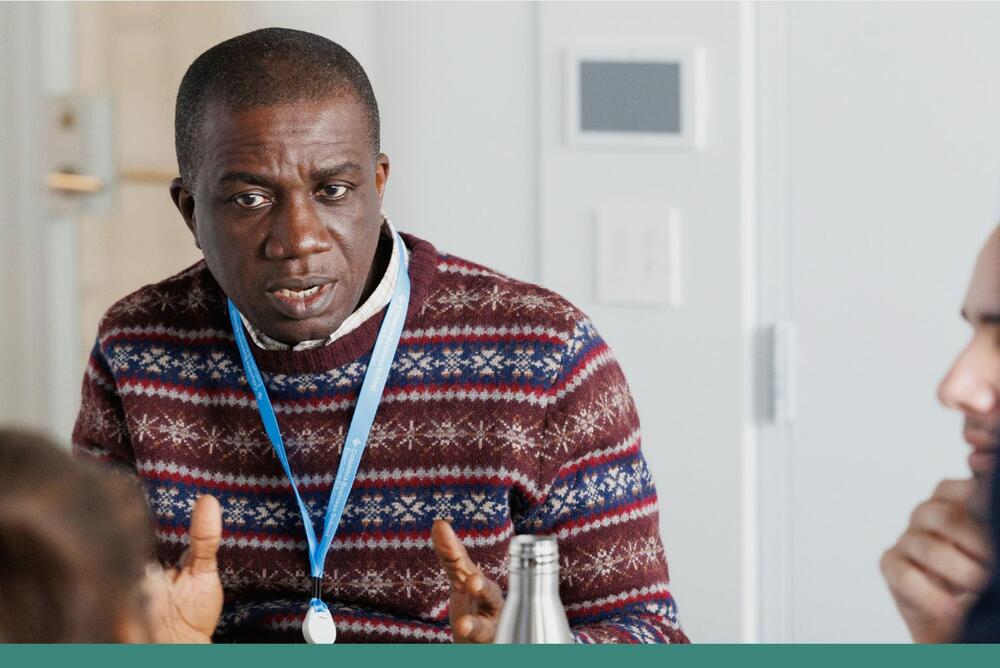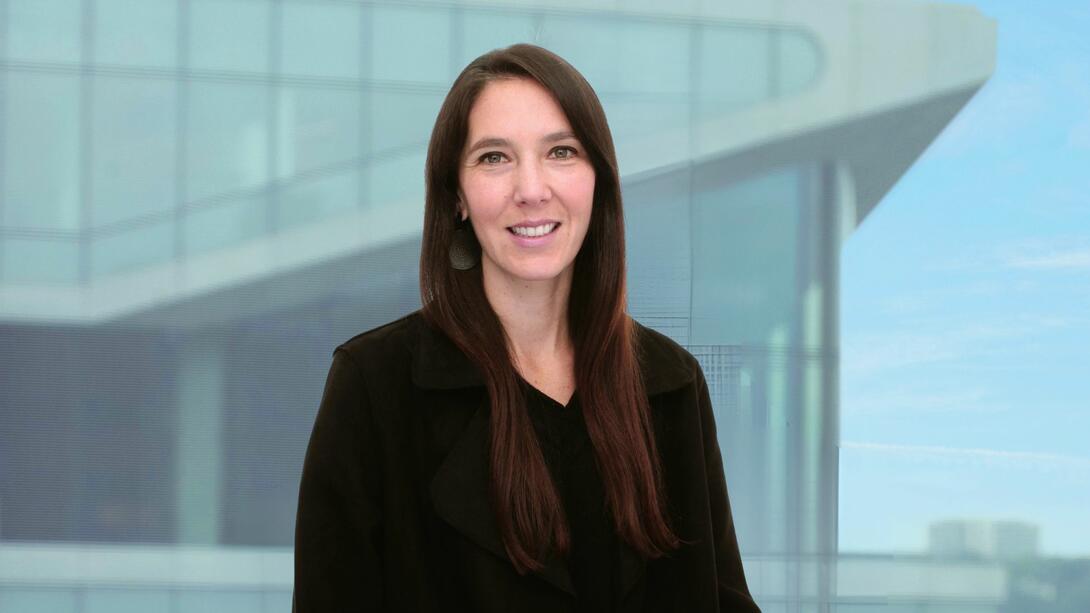
Tony Okpanachi on Advancing Development Finance through Strategic Growth
- What motivated you to join the Leading Strategic Growth and Change program?
- What professional challenge were you hoping to tackle?
- How has the program influenced your approach to strategy and innovation?
- What program elements stood out most?
- What was it like learning from faculty such as Rita McGrath?
- How did working on your personal strategic challenge in small-group sessions impact your learning experience?
- Did you participate in any of the nominated topic sessions?
- How has LSGC helped you drive growth, manage change, or strengthen your strategic vision?
- Have you noticed any tangible shifts in your leadership style or business outcomes since the program?
- What advice would you give to someone considering LSGC?
- Upcoming Leadership Programs
Q&A with Tony Okpanachi
Tony Okpanachi is the pioneer Managing Director and Chief Executive Officer of Development Bank of Nigeria Plc (DBN). A seasoned banking executive with over 30 years of experience, Tony has held leadership roles across multiple regions, including East and West Africa. Prior to leading DBN, he served as Deputy Managing Director at Ecobank Nigeria and held various top roles across Kenya, Malawi, and the East African sub-region. He holds a PhD. in Economics from Nile University, along with advanced degrees from Manchester Business School, University of Lagos, and Ahmadu Bello University, Zaria.
During the Leading Strategic Growth and Change program, Tony explored how to sharpen DBN’s strategic edge while navigating complexity and scale in Nigeria’s development finance ecosystem. We asked Tony a few questions to get his perspective on the program and its impact on his leadership.

What motivated you to join the Leading Strategic Growth and Change program?
As the leader of a wholesale development finance institution tasked with expanding access to finance for Nigeria’s MSMEs (Micro, Small, and Medium Enterprises), I recognized that strategic growth today is no longer linear. It requires navigating uncertainty, building resilient systems, and enabling change at scale. I joined the Leading Strategic Growth and Change program to deepen my ability to lead through complexity while anchoring our transformation with strategic discipline and foresight.
What professional challenge were you hoping to tackle?
At Development Bank of Nigeria (DBN), we’ve achieved important milestones, but to scale impact sustainably, we must continuously reimagine how we serve the underserved. I wanted to challenge my own thinking about how DBN could grow its relevance and value proposition in an increasingly competitive and dynamic development finance ecosystem. I wanted to think more creatively about that, and the Leading Strategic Growth and Change program gave me the tools and the space to do so.
How has the program influenced your approach to strategy and innovation?
As someone who has led strategy and operational execution across different contexts and institutions, I came into the Leading Strategic Growth and Change program not looking for answers, but for sharper lenses and ways to pressure-test our thinking at DBN. The program challenged me to look at strategy less as a fixed roadmap and more as a living system — a continuous cycle of learning, focusing, aligning, and executing. That model has helped us better navigate volatility while staying anchored in our long-term purpose.
What stood out especially was the emphasis on early warnings and strategic options. In our environment, you often don’t get perfect signals; you get partial, sometimes fuzzy indicators of change. The program gave me frameworks to act earlier and with more confidence, even when the path isn’t fully clear.
Another powerful takeaway was around transformation dynamics — not just the formal levers like org structure and incentives, but the informal drivers: culture, myths, history, and power dynamics. It reinforced something I’ve always believed: leading change is as much about trust and timing as it is about logic and plans. So, for me, the LSGC program didn’t just teach strategy; it refined how I practice it.
What program elements stood out most?
The quality of the faculty was exceptional, no doubt, but for me, it was the design of the experience that truly stood out. It was a well-paced blend of frameworks, case discussions, and peer exchange that allowed you to absorb, reflect, and immediately apply.
The sessions on platform strategy and network effects, for instance, opened up new ways of thinking about scale — not just through internal growth, but by orchestrating ecosystems. That struck a chord, especially as we think about DBN’s evolving role in the MSME finance space. It didn’t feel like a one-size-fits-all course; it felt like a room full of high-performing leaders having the exact conversations we needed to be having. There’s something unique about stepping away from your context into a room full of senior leaders across industries, all wrestling with different expressions of the same core challenge: how to lead in a world that doesn’t sit still.
What was it like learning from faculty such as Rita McGrath?
Rita McGrath has this rare ability to make complex concepts simple and memorable. Her articulation of “transient advantage” crystallized what I’ve been sensing as a leader in development finance — that traditional competitive moats are eroding faster, and agility is the new edge. Her sessions pushed us to ask better questions and challenge default assumptions.
How did working on your personal strategic challenge in small-group sessions impact your learning experience?
What stood out was how quickly the group helped me reframe the issue. Instead of focusing on surface-level decisions, the conversation shifted toward underlying assumptions, long-term implications, and cultural context. It challenged my thinking in a constructive way, and I walked away with a broader set of lenses and a few angles I hadn’t seriously considered before. Beyond the insights, it reminded me of the power of open, structured dialogue with people who aren’t embedded in your world.
Did you participate in any of the nominated topic sessions?
Yes, and I found that level of adaptability quite impressive. It’s not often you attend an executive program where the curriculum evolves based on what’s resonating most with the participants.
The nominated sessions created space for deeper exploration — whether around leading in uncertainty, scanning for weak signals, or navigating organizational politics. These were not just theoretical discussions; they addressed the real, often messy challenges we face as leaders.
What I appreciated most was that the faculty didn’t force a fixed agenda — they listened, responded, and facilitated conversations that met us where we were. That responsiveness made the experience feel truly tailored and relevant.
How has LSGC helped you drive growth, manage change, or strengthen your strategic vision?
The Leading Strategic Growth and Change program helped me bring greater clarity and structure to the way we think about growth, execution, and scale at DBN. It reinforced the importance of aligning strategic ambition with the organization’s capacity to adapt — not just in terms of systems, but in mindset.
One of the most valuable takeaways was the concept of building “lines of sight,” ensuring that everyone, from senior leadership to operational teams, understands how their work connects to the bigger picture. We've since been more intentional about that, especially as we navigate a more complex lending environment.
Have you noticed any tangible shifts in your leadership style or business outcomes since the program?
I’d say I’ve become more reflective, more curious. I ask more “why” and “what if” questions now — not in a way that slows things down, but to test our thinking. I’m more focused on building alignment across the organization, not just driving performance. It’s also influenced how I engage stakeholders — moving from persuasion to co-creation. Because at the end of the day, execution without alignment is short-lived.
What advice would you give to someone considering LSGC?
Go in with an open mind and a real challenge. This is not a passive program. It’s a catalytic experience that will challenge how you think, how you lead, and how you define success. It’s designed to stretch your thinking, test your assumptions, and refine how you lead in complex, fast-changing environments.
The value isn’t just in the frameworks or the faculty — though both are excellent. It’s in the space to pause, reflect, and engage with peers who are navigating similar pressures in very different contexts. If you’re serious about leading growth with intention and not just momentum, then Leading Strategic Growth and Change program is well worth the investment.
Contact Us
If you have questions about the program or are interested in enrolling or sponsoring someone in your organization, please don’t hesitate to contact Cristina Ordonez at cristina.ordonez@gsb.columbia.edu.
Upcoming Leadership Programs
$8,150
$30,500
$59,500
$10,250
$12,250
Sign Up for Email Alerts
Sign up for program updates and content relevant to today's business leaders from Columbia Business School Executive Education.

